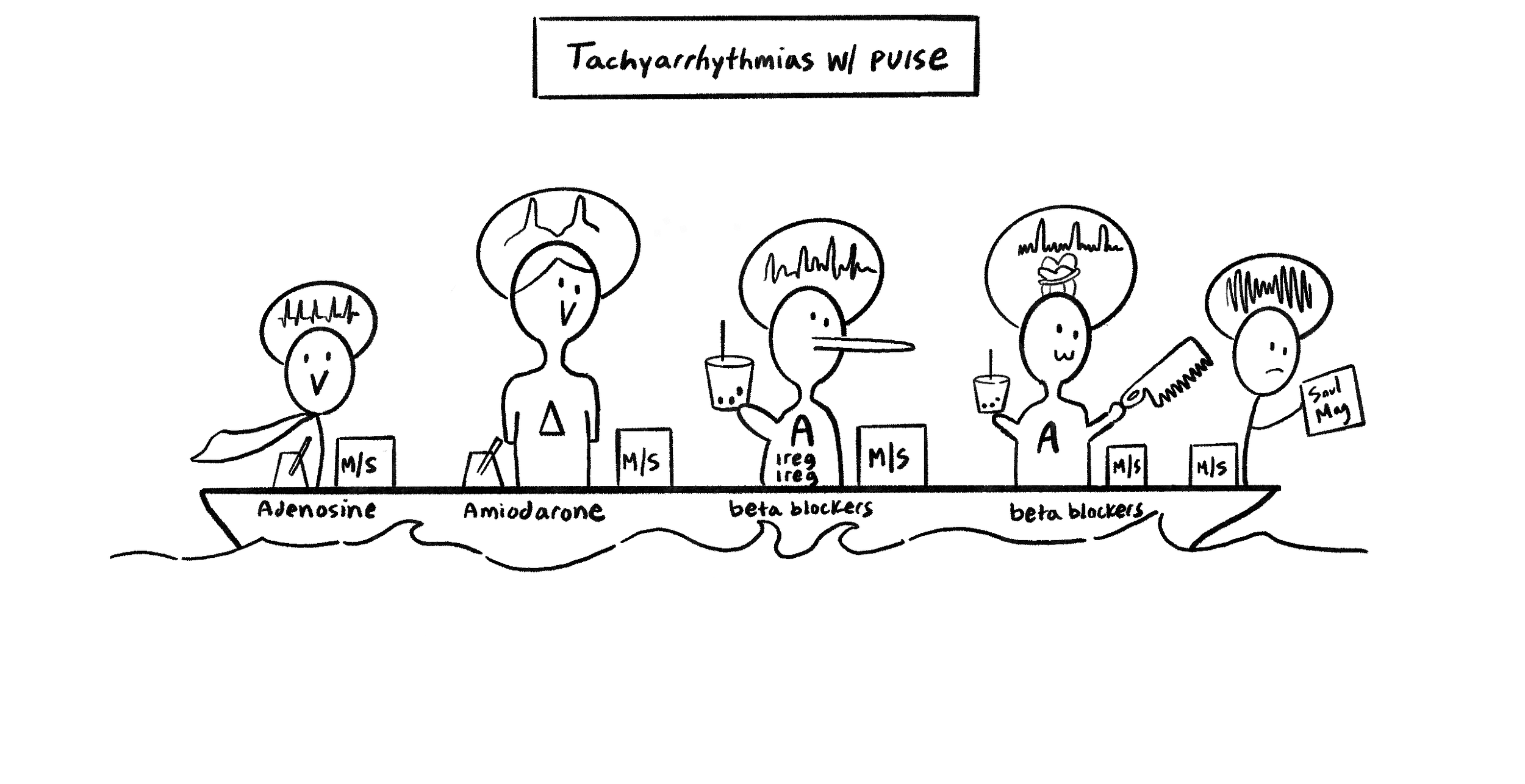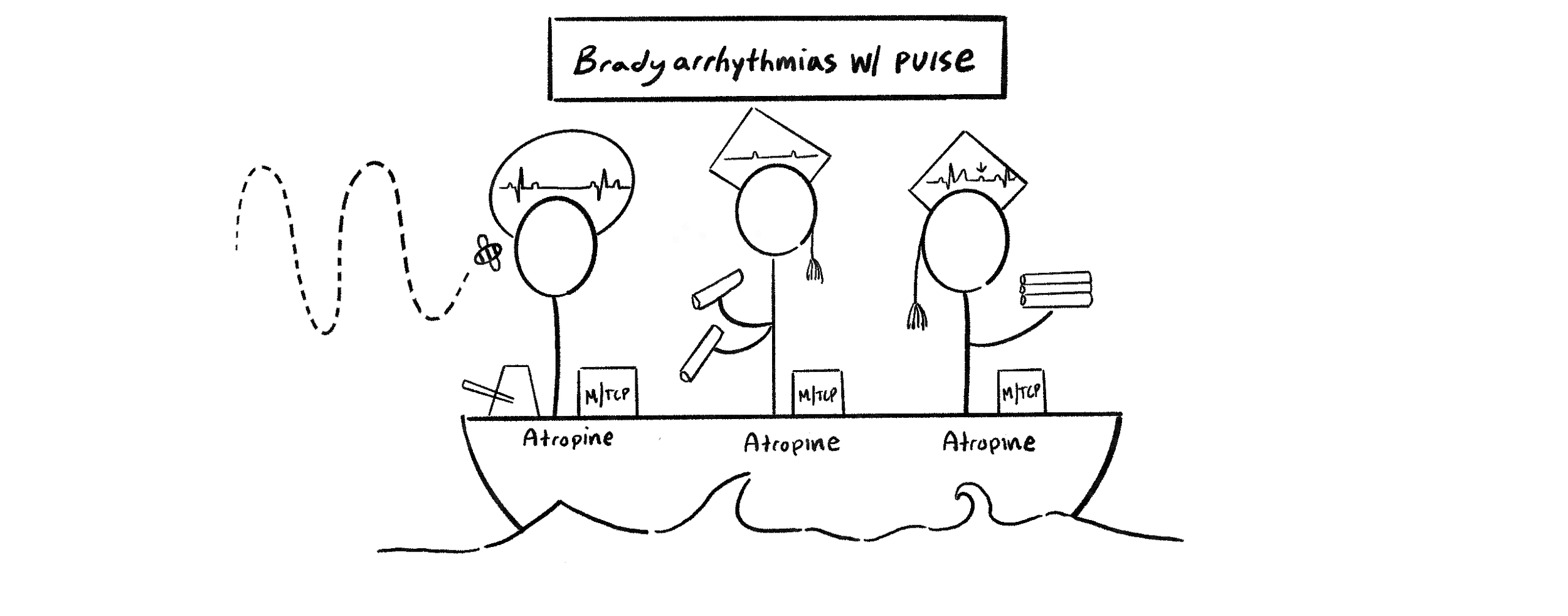ACLS & EKG
ACLS stands for advanced cardiovascular life support, a critical skill in the emergency department. This section will summarize everything you need to know for your first day of ER rotations. This chapter will include three sections: Pulseless Rhythms, Tachyarrhythmias with a Pulse, and Bradyarrhythmias with a Pulse.
To help recall APPV/SMAAT/SST (try to recall all images)
This is our four pulseless rhythms. From left to right, we got aSYSTole person who has a lot of CYST on his head. There is our PEA in a pod figure (Pulseless Electrical Activity) PEA. Next is our guy with polygon shapes on his shirt (Polymorphic Ventricular Tachycardia). We added a V-shaped mouth and a metronome pointed to the right to help you remember the “ventricular tachycardia” part. Finally, is our little Pinocchio who has a long nose, as if he just said a FIB. Notice the V-shaped mouth (he represents V-fib). The hats represent the EKG pattern. The ship is on land, representing dryness or the pulseless status of the patient. All of them require EPI. But only the first two are monitored, while the last two require defibrillation as soon as possible. Notice all our guys have their hands together and pushing downwards (all pulseless rhythms here require CPR).
The following sketch is Tachy-arrhythmias with pulse. From left to right we have our Supraventricular tachycardia, monomorphic ventricular tachycardia, atrial fibrillation, atrial flutter, and torsades de pointes. Like the last sketch, we have instructions for how to address each one.
The following is our sketch of Bradyarrhythmias with pulse. From left to right are our SINus bradycardia, second-degree type 2 AV block, and third-degree AV block. Notice our degree is represented by college degrees, and we used a bee flying in a sine wave pattern to represent SINus in sinus bradycardia. All may require the atropine drug. They may also need transcutaneous pacing if the patient becomes unstable.


